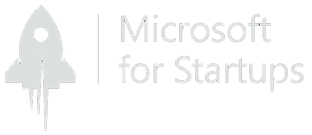Putting generative text models to work
Large language models
LLMs are capable of a wide range of language-related tasks, including language translation, text summarization, question answering, sentiment analysis, and natural language generation. They can be used in a variety of fields, including business, healthcare, education, and entertainment.
Learn More
What are they?
Understanding language models
Large Language Models or LLMs are a type of artificial intelligence (AI) model designed to process and generate human language. They are trained on vast amounts of text data using machine learning algorithms, allowing them to understand the nuances of natural language and generate coherent and contextually appropriate responses.
What can you do?
How can you use LLMs?
Sentiment Analysis
LLMs can analyze customer feedback on social media and review sites to determine the sentiment and identify areas for improvement.
Chatbots & Virtual Assistants
They can be used to build chatbots and virtual assistants that can answer customer queries & provide information about products and services.
Language Translation
Translate documents, websites, and other materials from one language to another, making it easier for businesses to communicate with clients and customers in different regions.
Content Creation
Generate high-quality content for websites, social media, and other marketing materials. They can create blog posts, social media updates, and even product descriptions.
Structure data
Automate tasks like data extraction, document classification, and text analysis. This can save time and improve efficiency.
Personalization
Analyze customer data and create personalized marketing messages, product recommendations, and other communications.
Applications
Healthcare
LLMs can be used to analyze electronic medical records to identify patterns and improve patient outcomes. They can also be used to develop virtual assistants for patients that can answer questions, provide medication reminders, and offer other types of support.
Retail
Structure your catalog to build recommendation engines, develop chatbots and virtual assistants that can help customers find products, answer questions, and provide support. They can also be used to analyze customer feedback and develop personalized marketing messages.
Finance
Analyze financial data, generate reports, and develop predictive models. They can also be used to monitor social media for news and sentiment analysis, which can inform investment decisions.
Customer Service
Automate customer service tasks, such as responding to emails and answering phone calls. They can also be used to analyze customer feedback and identify areas for improvement.
Legal
Assist with legal research, draft legal documents, and analyze case law. They can also be used to develop assistants that can provide legal advice and support with human in the loop processes
Marketing & Advertising
Analyze social media data, develop content strategies, and generate high-quality content. LLMs can also be used to develop personalized marketing messages and analyze customer feedback.
Education
Develop intelligent tutoring systems that can help students learn more effectively. Also, analyze student data and provide personalized feedback to teachers and parents.
News & Media
Summarize news articles, analyze social media trends, and develop personalized content recommendations for users. Answer questions and provide information to readers.
Human resources
Streamline the recruiting process by screening resumes, conducting initial interviews, and identifying top candidates. They can also be used to analyze employee feedback and identify areas for improvement.
Language models in production
Production ready applications
Whether using an LLM is a good idea for your business depends on several factors, including your industry, available data, the specific tasks you need the LLM to perform, and your budget.
Should I use this?
If your business deals with large amounts of text data, such as customer reviews, social media posts, or other types of unstructured data, an LLM may be able to help you analyze that data and extract valuable insights. LLMs can also help automate certain tasks, such as responding to customer inquiries, generating content, or even translating documents.
However, it's important to note that implementing an LLM can be a significant investment. Depending on your specific needs, you may need to hire data scientists or machine learning experts to help you develop and train the model. You'll also need to invest in the necessary infrastructure, such as high-performance computing resources, to run the model.
Additionally, while LLMs can be incredibly powerful tools, they're not a silver bullet solution. They're not capable of replacing human judgment or expertise, and they're only as good as the data they're trained on. Before implementing an LLM, it's important to carefully consider your goals, your available resources, and the potential risks and benefits of using this technology.
In summary, using an LLM can be a good idea for your business if you have a clear understanding of what you want to achieve, the resources to invest in developing and implementing the model, and a plan for how to integrate it into your existing workflow.
What do I need to use them?
To use a large language model (LLM) to solve your problem, you will typically need the following:
- A clear problem statement: You should have a clear understanding of the problem you are trying to solve, including the specific tasks you want the LLM to perform.
- Sufficient data: To train an LLM, you will need a large amount of relevant data that reflects the real-world scenarios you want the LLM to handle. The quality and quantity of the data are critical factors in the success of the LLM.
- Computing resources: Training and running them requires significant computing resources, including powerful servers, GPUs, or TPUs, depending on the size of the model and the complexity of the task.
- Integration with existing systems: Once you have a trained LLM, you will need to integrate it into your existing systems and workflows. This may require development and engineering support.
- Continuous refinement: LLMs are not a one-and-done solution. They require ongoing refinement and optimization to maintain their performance over time.
45
Terabytes of text data were used to train GPT-3 (GPT-4 precursor)
Data
The volume of information needed to train a large language model (LLM) can vary depending on the specific use case and the complexity of the language model.
In general, LLMs require a large amount of text data to train effectively. The exact amount of data needed can vary widely, but in many cases, it's on the order of billions of words or more. In other cases, if you're training an LLM for a more specialized task, such as sentiment analysis or named entity recognition, you may be able to achieve good results with a smaller dataset.
It's also worth noting that the quality of the data is just as important as the quantity. The data used to train an LLM should be relevant to the task at hand and should reflect the real-world scenarios the LLM will be used for. Additionally, the data should be well-structured and labeled in a way that's appropriate for the task.
Data
The volume of information needed to train a large language model (LLM) can vary depending on the specific use case and the complexity of the language model.
In general, LLMs require a large amount of text data to train effectively. The exact amount of data needed can vary widely, but in many cases, it's on the order of billions of words or more. In other cases, if you're training an LLM for a more specialized task, such as sentiment analysis or named entity recognition, you may be able to achieve good results with a smaller dataset.
It's also worth noting that the quality of the data is just as important as the quantity. The data used to train an LLM should be relevant to the task at hand and should reflect the real-world scenarios the LLM will be used for. Additionally, the data should be well-structured and labeled in a way that's appropriate for the task.
45
Terabytes of text data were used to train GPT-3 (GPT-4 precursor)
Popular LLM models
What models can I use?
ChatGPT
The popular OpenAI private model is currently only accessible through pay-per-use APIs and can not be fine-tuned for a specific task but it can be integrated into complex workflows.
GPT-4 & GPT-3
GPT-3 was trained on a dataset of over 45 terabytes of text data. It required 3,072 Nvidia V100 GPUs and 307 TiB of high-bandwidth memory. Training for GPT-4 was increase manifold.
BERT
The BERT (Bidirectional Encoder Representations from Transformers) language model was trained on a dataset of over 3.3 billion words or 800 million sentences. It was performed using 4 to 16 Cloud TPUs (Tensor Processing Units).
RoBERTa
RoBERTa (Robustly Optimized BERT Approach) was trained on a dataset of over 160GB of text data, which includes Wikipedia, Common Crawl, and web pages crawled from the internet. RoBERTa was trained on a cluster of 1,024 GPUs, specifically Nvidia V100 GPUs.
T5
The T5 (Text-to-Text Transfer Transformer) language model was trained on a dataset of over 750GB of text data, which includes a combination of books, web pages, and Wikipedia. Its training used a large cluster of Cloud TPUs, with the largest model requiring up to 1,024 TPU cores.
ELMo
The ELMo (Embeddings from Language Models) language model was trained on a dataset of over 800 million words, which includes a combination of news articles, books, and web pages. The training of ELMo used a cluster of GPUs, specifically 4 Nvidia Tesla P100 GPUs.
Get in touch with one of our specialists.
Let's discover how we can help you
Training, developing and delivering machine learning models into production
Contact us
Got a project?
Let's talk
About us
Industries
Expertise
Services






















